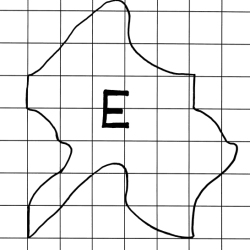Source Institutions
Source Institutions
Add to list Go to activity
Activity link broken? See if it's at the internet archive

In this math lesson, learners use a variety of manipulatives to explore spatial relationships of squares and their transformations. Learners create a square with 36 square tiles and determine that by sliding several of the pieces both vertically and horizontally, they form an irregular shape that can be tessellated. Learners are given a variety of curved shapes and encouraged to use tape and scissors to reconfigure their shape back into a square. Learners are surprised to learn that all of the different shapes have the same area. Given a variety of measurement tools, learners are also asked to estimate the number of squares tiles (24" x 24”) needed to cover an assigned section of the sidewalk. Finally, learners create a pattern from the square and tessellate it on the sidewalk using chalk.
- 10 to 30 minutes
- 1 to 2 hours
- $5 - $10 per group of students
- Ages 8 - 11
- Activity, Lesson/Lesson Plan
- English
Quick Guide
Materials List (per group of students)
- 2 squares: 36 square units in size. (One should show an outline of the grid)
- 36 magnetic square tiles or cut-outs of small squares that can be taped to the board
- 4 copies of the 36 square unit shape
- Square Tiles (36 per learner)
- Activity Sheets: Special Shape (A-E)
- Activity Sheets: Sidewalk Capers
- Colored sidewalk chalk
- Tape measures
- Tape
- Rulers
- Scissors
- Square units made from paper (approximately 24 in on a side)
Subjects
-
Mathematics
-
Algebra
- Patterns
-
Geometry
- Plane Geometry
-
Measurement
- Polygons
-
Algebra
-
The Nature of Technology
-
The Design Process
- Problem Solving
-
The Design Process
Informal Categories
- Outdoor Activity
Audience
To use this activity, learners need to:
- see
- read
- be mobile
- touch
Learning styles supported:
- Involves teamwork and communication skills
- Involves hands-on or lab activities
Other
This resource is part of:
Access Rights:
- Free access
By:
Rights:
- All rights reserved, PBS, 2012
Funding Source:
- US Department of Education
